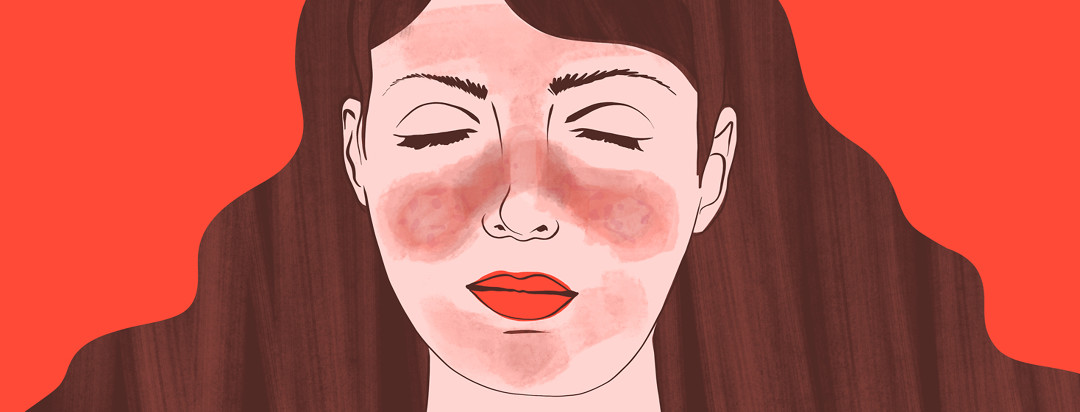I Am Not Blushing – It Is My Malar Rash
I first noticed that my face was unusually red when I was living in Germany. I suspected that I was just overheated because we didn't have air conditioning. I also thought it could be an alcohol flush reaction from the Bailey's latte I had earlier. Whatever the reason, I found the redness to be embarrassing.
Fast forward to nearly a year later and I was back home in the USA sitting in a doctor's office, seeking a third opinion for all my strange and uncomfortable symptoms. The first thing the rheumatologist commented on was my classic malar rash. I didn’t really understand what he meant by that, but I went home and looked it up straight away.
Having such a recognizable, visible symptom of lupus sped up my diagnostic process. I was thankful, in a way, yet stunned by the diagnosis.
What is a butterfly or malar rash?
Also called a butterfly rash, a malar rash appears across the bridge of the nose and on the cheeks. It can be a slight blush or an intense red, or even purplish and scaly. It usually shows up in response to UV light exposure, but not always. Many lupus patients have it, but not all. It’s so characteristically lupus-like in its inconsistency.
People with lupus have higher amounts of skin cells responsible for inflammation and cell death.1 They also have a more difficult time clearing the dead cells. Both factors could be to blame for those pesky rashes.
How does a malar rash feel?
Even though my diagnosis was 3 years ago, I didn't learn how to use makeup to cover up my rash until last year. I can finally go out without broadcasting it to the world. But when my rash stands out, I sometimes feel humiliated.
I'm not blushing. I'm not sunburnt. I didn't overzealously apply powder blush. It's just a rash caused by my lupus. Oh, and it's not contagious. Rashes can make people uncomfortable. Some people might think it’s viral, while others might wonder what could possibly be causing me to flush so profusely.
Most of the time, my malar rash shows up in the privacy of my home. It often happens when I’m resting – usually during a nap or right before bed. I’ll feel my face get hot – it will actually give off heat – and when it’s bad enough the burning sensation is painful. If it’s mild I might not feel it and be blissfully unaware – until I look in the mirror.
Coping with my malar rash
There are things I can do, such as apply aloe or corticosteroid cream. I can also acknowledge that frequent rashes might mean a flare is coming and take preventative measures. Over the past month, I've been having one nearly every day, so perhaps I’m more stressed out than I thought and I need to take some time to slow down.
For better or worse, I think my malar rash will be sticking around. My rheumatologist told me that no matter how low my disease activity is, it’s possible to still be symptomatic. Part of life with lupus is acceptance, so I'll keep trying to get along with my rash as best I can.

Join the conversation